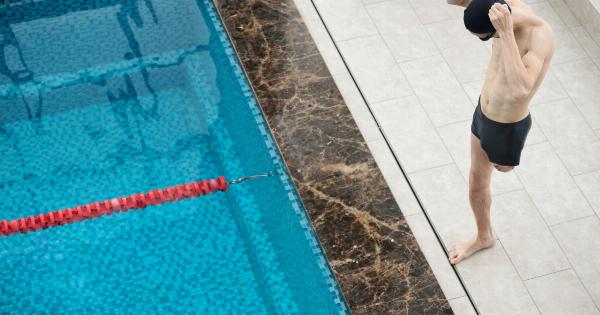Varicose veins are swollen, twisted veins that often appear dark blue or purple in color. They usually occur in the legs and can be both unsightly and uncomfortable.
Varicose veins are a result of weakened valves and veins, which fail to efficiently transport blood back to the heart. This leads to the pooling of blood in the veins, causing them to stretch and bulge.
Causes of Varicose Veins
There are several factors that contribute to the development of varicose veins. These include:.
1. Genetics
Varicose veins tend to run in families. If your parents or close relatives have varicose veins, you are more likely to develop them as well.
2. Age
As you age, the valves and walls of your veins may weaken, increasing the risk of varicose veins.
3. Pregnancy
Pregnancy puts additional pressure on the veins in the legs, leading to the development of varicose veins.
4. Obesity
Excess weight can put extra strain on your veins, making them more susceptible to developing varicose veins.
5. Prolonged Sitting or Standing
Occupations or activities that involve prolonged sitting or standing can contribute to the development of varicose veins.
6. Cross-legged Sitting
Cross-legged sitting is a common sitting position for many people, but it can have negative effects on your veins.
Sitting in this position for extended periods of time can increase pressure on the veins, hindering blood flow and potentially leading to varicose veins.
Effects of Cross-legged Sitting on Vein Health
Cross-legged sitting may seem comfortable, but it can have detrimental effects on the health of your veins. Here’s how it can contribute to the development of varicose veins:.
1. Restricted Blood Flow
When you sit cross-legged, you put pressure on the veins in your legs and restrict blood flow. This causes blood to pool in the veins, leading to the development of varicose veins.
2. Increased Pressure on Veins
The pressure exerted on the veins when sitting cross-legged increases the workload for the veins, weakening them over time. This can result in varicose veins.
3. Impaired Valve Function
The valves in your veins help to prevent blood from flowing backward. Cross-legged sitting can impair the function of these valves, leading to blood flowing in the wrong direction and causing the veins to enlarge and become varicose.
Preventing Varicose Veins from Cross-legged Sitting
While it may be challenging to avoid sitting cross-legged entirely, there are steps you can take to prevent varicose veins:.
1. Take Regular Breaks
If your job requires prolonged sitting, make it a point to take regular breaks and move around. This helps improve blood circulation and reduces the risk of varicose veins.
2. Elevate Your Legs
When you have the opportunity, elevate your legs to improve blood flow. Prop your legs up on a stool or footrest to reduce pressure on the veins.
3. Wear Compression Stockings
Compression stockings can help improve circulation and reduce the risk of varicose veins. They exert gentle pressure on the veins, promoting blood flow back to the heart.
4. Stay Active
Regular exercise, especially activities that involve leg movement, can improve blood circulation and reduce the risk of varicose veins. Aim for at least 30 minutes of moderate exercise most days of the week.
5. Maintain a Healthy Weight
Excess weight puts additional strain on your veins, increasing the risk of varicose veins. Maintain a healthy weight through a balanced diet and regular exercise.
When to Seek Medical Treatment
If you already have varicose veins or are experiencing symptoms such as pain, swelling, or discomfort, it is advisable to seek medical treatment. Options for treatment may include:.
1. Sclerotherapy
In this procedure, a solution is injected into the affected vein, causing it to collapse and fade over time.
2. Laser Treatment
Using laser energy, the affected vein is sealed and eventually fades away.
3. Vein Stripping
Vein stripping is a surgical procedure where the affected vein is removed through small incisions.
Conclusion
Cross-legged sitting, although a common posture, can contribute to the development of varicose veins.
By understanding the effects of prolonged cross-legged sitting and taking preventive measures, such as regular breaks and wearing compression stockings, you can reduce the risk of varicose veins. If you already have varicose veins or experience symptoms, consult a healthcare professional for appropriate treatment options.































